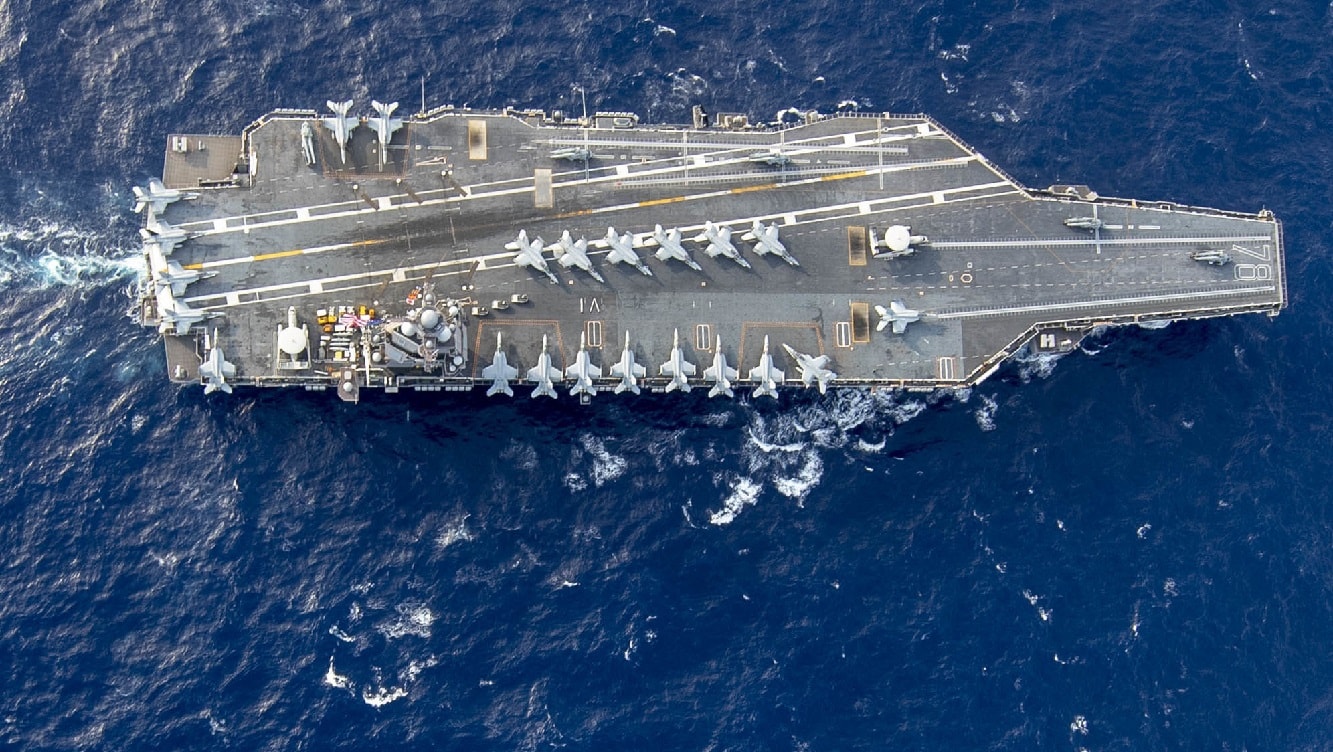The Ford-Class Has a New Problem: At issue are two of the carrier’s more advanced systems, which are apparently experiencing teething problems.
Congressional testimony has revealed that the delivery of the United States Navy’s newest aircraft carrier, the USS John F. Kennedy, will be delayed thanks to several pressing challenges.
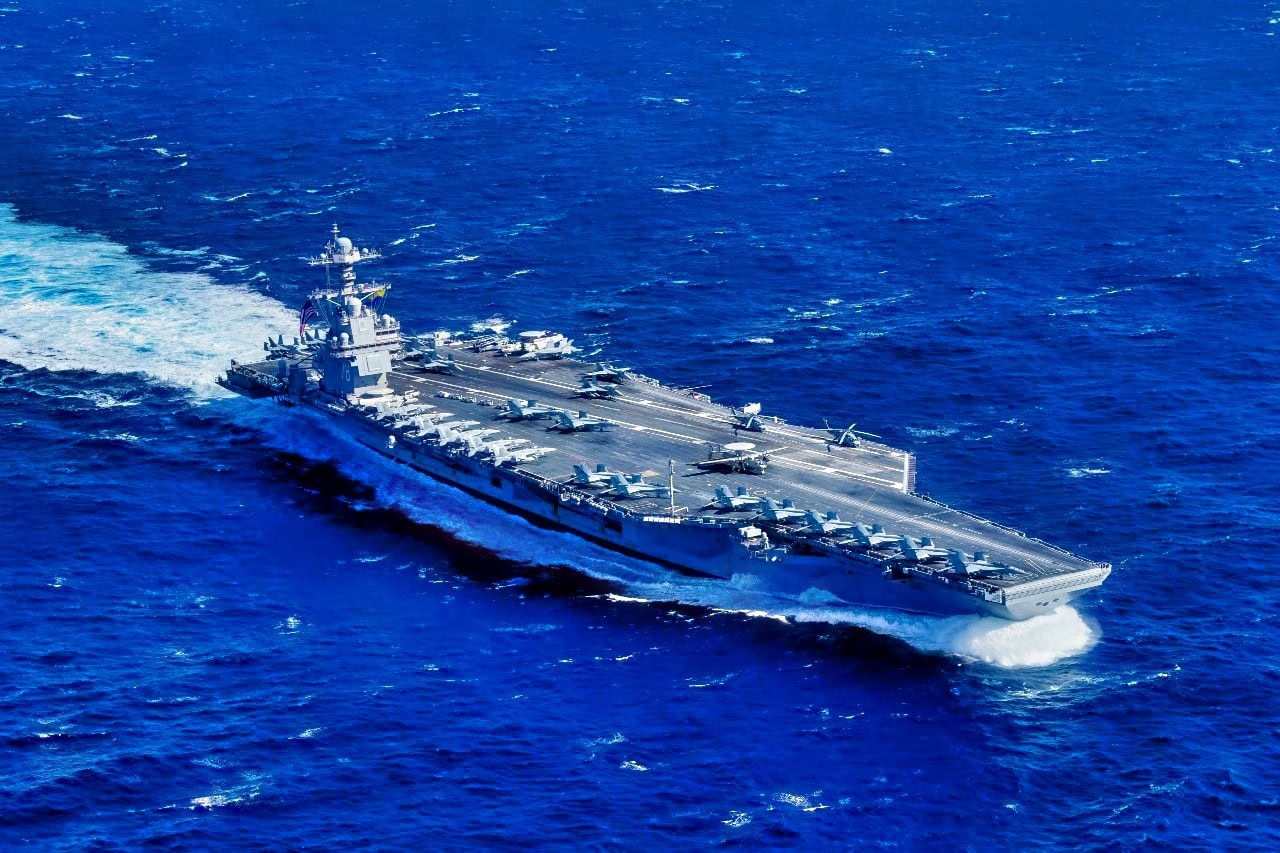
The world’s largest aircraft carrier, USS Gerald R. Ford (CVN 78), sails in formation with the Arleigh Burke-class guided missile destroyers USS Winston Churchill (DDG 81), USS Mitscher (DDG 57), USS Mahan (DDG 72), USS Bainbridge (DDG 96), and USS Forrest Sherman (DDG 98) in the Atlantic Ocean, Nov. 12, 2024. The Gerald R. Ford Carrier Strike Group is underway in the Atlantic Ocean completing Group Sail. Group Sail is the first at-sea integrated phase training event during a routine deployment training cycle. It is designed to challenge the Gerald R. Ford CSG’s ability to use the capabilities of the USS Gerald R. Ford (CVN 78), USS Winston S. Churchill (DDG 81), Carrier Air Wing (CVW) 8, Destroyer Squadron (DESRON) 2, and embarked Information Warfare team as a cohesive Strike Group to meet Navy and Joint Warfighting requirements that increases warfighting capability and tactical proficiency across all domains. (U.S. Navy photo by Mass Communication Specialist 2nd Class Maxwell Orlosky)
The Ford-Class Challenge Is Back
During a Tuesday Senate Armed Services Committee hearing on the state of America’s nuclear shipbuilding, US Navy officers discussed the state of American submarine building, the maritime defense industrial base, and the next generation of American aircraft carriers under construction.
In a joint statement, the officials explained that the “John F Kennedy (CVN 79) is nearly 95 percent construction complete and has a contract delivery date of July 2025, however, we assess significant pressure to that date,” citing “critical path challenges” particularly in reference to the aircraft carrier’s Advanced Weapons Elevators and Aircraft Launch and Recovery Equipment.
“Initial class design challenges are resolved, as evidenced by Ford’s successful operations, however, early class production-focused challenges and associated learning continue on CVN 79. All lessons learned and improvements by both the Navy and industry teams are being implemented in construction on CVN 80 and 81 [the next two Ford-class carriers slated for construction].”
The US Navy and shipbuilder HII-NNS “are hyper-focused on a CVN 79 delivery plan that results in the fastest path to a combat-ready CVN, crew, and air wing,” the officials explained.
The Gerald R. Ford-class Aircraft Carrier
The Ford-class aircraft carriers are the largest ships ever built, not only for the United States Navy but for any navy. Thanks to a slew of technological upgrades, they are much more technically advanced than their Nimitz-class predecessors.
Ford’s Electromagnetic Aircraft Launch System, or EMALS, relies on an electric motor to launch aircraft instead of the legacy steam piston incorporated into previous carriers. The EMALS system weighs less than its steam piston counterpart. It accelerates aircraft more smoothly than the previous mechanical system, imparting less strain on airframes, a boon to aircraft longevity and maintenance.
The Ford-class boasts a higher sortie rate than the Nimitz-class thanks to their electromagnetic launch and recovery system, which replaces the older steam-powered launching machinery. A key part of this ability has been the nuclear-powered carrier’s power generation, afforded by its onboard reactors, which have greater output than their predecessors.
An expansion of power generation also holds promise for future technologies: as the US Navy is moving to integrate directed-energy weaponry onto ships, nuclear power plays a vital role in producing the electricity that would make laser weapons viable.
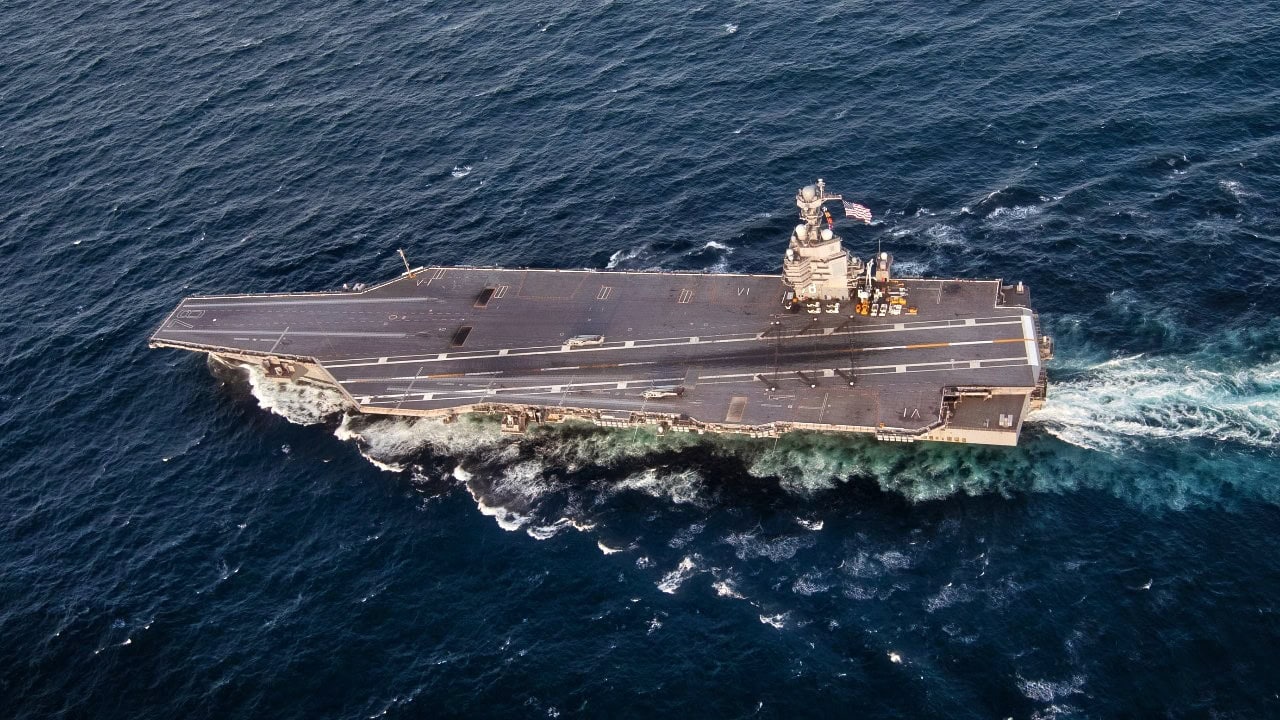
The Ford-class aircraft carrier USS Gerald R. Ford (CVN 78) and the Italian aircraft carrier ITS Cavour (CVH 550) transit the Atlantic Ocean March 20, 2021, marking the first time a Ford-class and Italian carrier have operated together underway. As part of the Italian Navy’s Ready for Operations (RFO) campaign for its flagship, Cavour is conducting sea trials in coordination with the F-35 Lightning II Joint Program Office’s Patuxent River Integrated Test Force to obtain official certification to safely operate the F-35B. Gerald R. Ford is conducting integrated carrier strike group operations during independent steaming event 17 as part of her post-delivery test and trials phase of operations.
If the technology proves powerful enough to become a capable defensive weapon, its utility in the Indo-Pacific has the potential to be game-changing.
The Indo-Pacific and Chinese Anti-ship Weaponry
The United States Navy’s aircraft carriers face a more significant challenge now from Chinese anti-ship capabilities than at any time since the collapse of the Soviet Union—or, more agreeably, since the end of the Second World War.
China has poured an incredible amount of resources into bolstering its A2/AD abilities—that is, the ability to deny US Navy Carrier Strike Groups uncontested access to waters approaching the Chinese mainland. China’s dense and overlapping umbrellas of anti-ship weaponry extend deep into the Western Pacific, with some of the most long-range weaponry capable of striking Guam, a vital node for the US Navy.
And while the United States Navy does protect its Carrier Strike Groups with the robust air defense assets afforded by Ticonderoga-class cruisers and, to some extent, also present on the Arleigh Burke-class destroyers, those vessel’s air defense magazines are finite.
Directed energy weaponry, however, offers, in theory, the ability to disable vast numbers of incoming munitions for just cents per shot—and their magazines are virtually infinite.
Future Procurement of Ford-Class
Construction of the newest Ford-class carriers aside, American shipbuilding as a whole is approaching what appears to be a significant bottleneck. Not only must American shipbuilders build the carriers, destroyers, and submarines they’ve contracted with the US Navy for, but they must also build submarines in the future for Australia as part of the tripartite U.S.-U.K.-Australia nuclear submarine sharing agreement, or AUKUS.
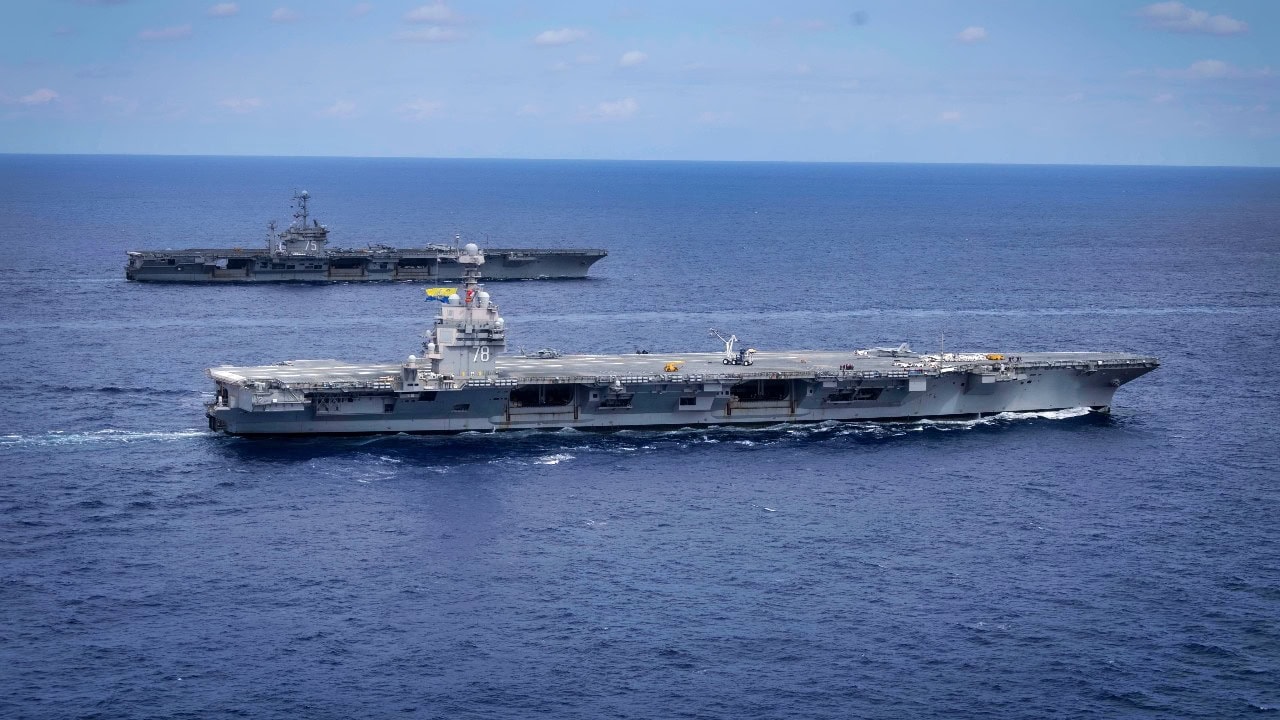
ATLANTIC OCEAN. (Aug. 24, 2024) The Nimitz-class aircraft carriers USS Harry S. Truman (CVN 75), back, and the world’s largest aircraft carrier, USS Gerald R. Ford (CVN 78), sail in formation in the Atlantic Ocean, Aug. 24, 2024. USS Gerald R. Ford is the flagship of the Gerald R. Ford Carrier Strike Group. The aircraft carrier is underway in the Atlantic Ocean to further develop core unit capabilities and skills such as fuels certification and ammunition on-load during its basic phase of the optimized fleet response plan. (U.S. Navy photo by Mass Communication Specialist 2nd Class Maxwell Orlosky).
As part of that agreement, which would see Australia purchase three Virginia-class submarines in 2032, Australia has invested several billion dollars in improving American submarine building yards to meet the increased production demand placed by the AUKUS deal. However, the Trump administration reportedly asked Australia to provide more funds for shipyards.
Likewise, it is unclear if Australia would use those submarines against China should war break out. Australia has indicated it would prefer to use American-supplied nuclear submarines to secure maritime routes to Australia and monitor maritime traffic.
In previous comments, Elbridge Colby, a newly appointed member of the Trump administration’s Defense Department, has cast doubt on the wisdom of giving submarines to Australia if that country is unwilling to leverage them against China.
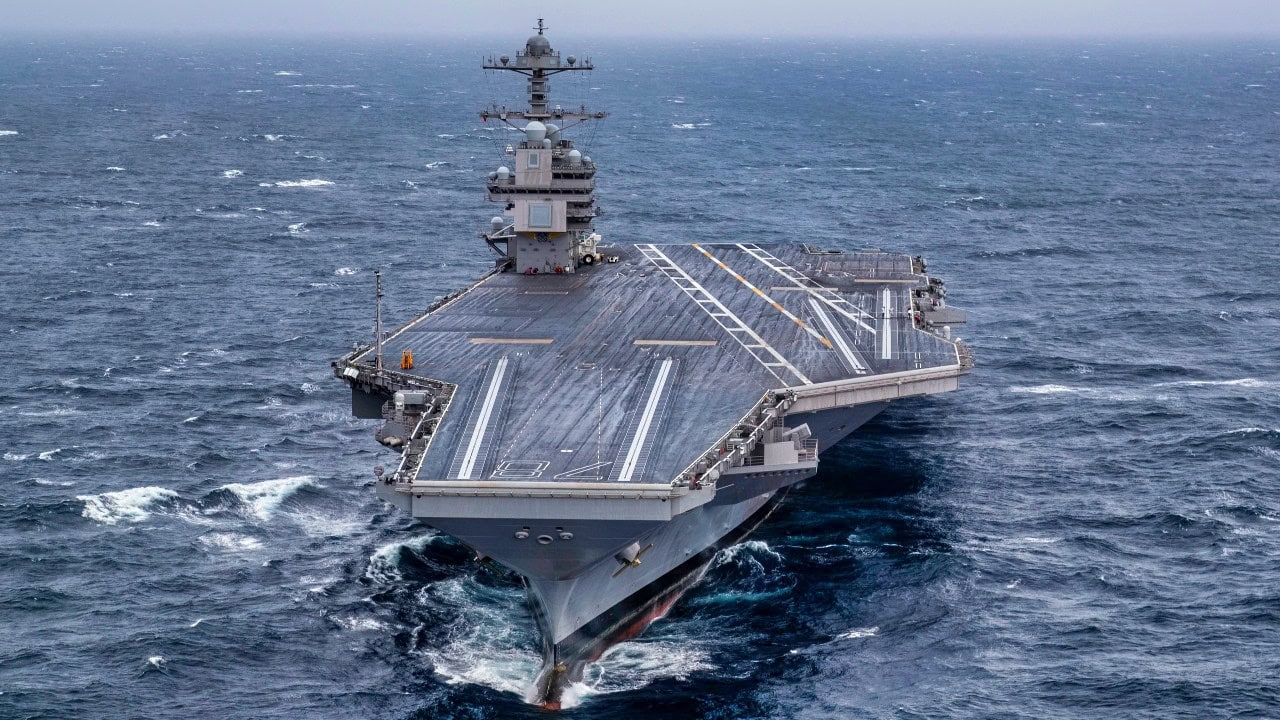
ATLANTIC OCEAN (Oct. 27, 2019) USS Gerald R. Ford (CVN 78) steams in the Atlantic Ocean for the first time since July 2018. Ford is conducting sea trials following its 15 month post-shakedown availability. (U.S. Navy photo by Mass Communication Specialist 3rd Class Connor Loessin)
What Happens Next?
Ultimately, the United States Navy would like to procure ten Gerald R. Ford-class aircraft carriers, replacing them one-for-one with the current fleet of Nimitz-class carriers. However, the production of carriers, ships, and submarines faces strong headwinds.
Whether production delays can overcome them remains to be seen, but time is of the essence, with a potential war scenario with China looming on the horizon.
About the Author: Caleb Larson
Caleb Larson is an American multiformat journalist based in Berlin, Germany. His work covers the intersection of conflict and society, focusing on American foreign policy and European security. He has reported from Germany, Russia, and the United States. Most recently, he covered the war in Ukraine, reporting extensively on the war’s shifting battle lines from Donbas and writing on the war’s civilian and humanitarian toll. Previously, he worked as a Defense Reporter for POLITICO Europe. You can follow his latest work on X.

